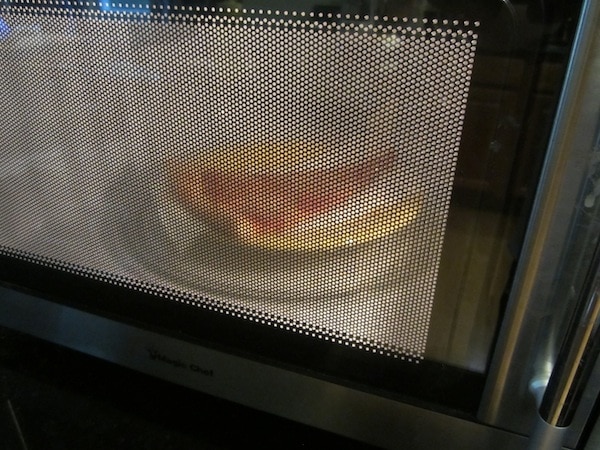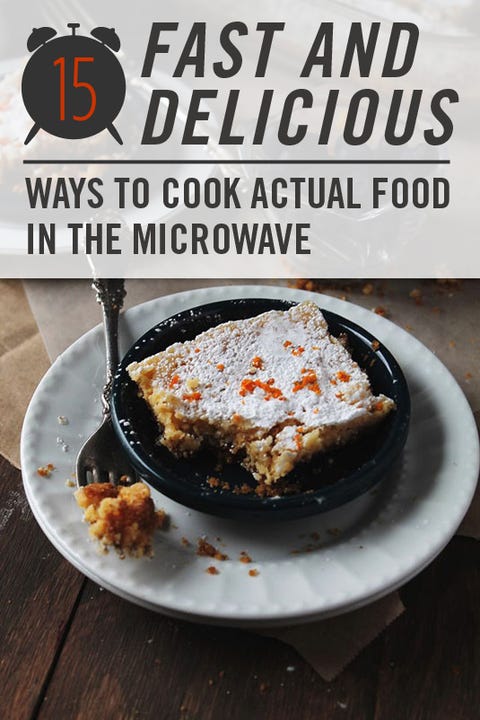Can I Re Cook Crack In Microwave
- 0 Comments!

For Beach Picnics, Bring Foods You Can Eat With Toothpicks. A beach picnic always sounds delightful but, unless you want soggy sandwiches and a mouthful of sand, some planning is required. After a life of living only in states that have a coast, I have developed a successful strategy for keeping sand out of my food and mouth. Since sandy hands are the enemy, this strategy is two fold: Clean your damn hands before touching the food. Un- package and pre- portion your food before taking it to the beach. The first part is the easiest. Get some wipes and use them to wipe off your hands before even opening your cooler or picnic basket.
Baby wipes work, but I’m extremely obsessed with these fantastic- smelling essential oil wipes. Having wipes definitely cuts down on sand contamination but, even if you provide them, there is no guarantee that your family and friends will use them because, as I have discovered, people don’t like being told what do when they’re trying to have chill afternoon at the beach. This is where the second part comes in, and why taking food out of its original packaging is so important. If you leave everything in plastic wrappers, bags, or boxes, sandy hands have to reach into that packaging to extract the food. If the food isn’t bite- sized, it either has to be portioned up at the beach (horror) or held in the hand an gnawed upon, which is fine if you’re alone but not conducive to sharing. Taking food out of its original packaging, cutting it up into bite- sized pieces (think stuff that will fit on toothpicks), and then storing them in easy- open, high- walled containers makes your beach lunch easy to eat while keeping it sand- free (or as sand- free as possible). Make sure to provide toothpicks, so people don’t reach in with their beachy fingers.
Need help in the kitchen? I tried it without the egg and the dough was too dry. I suggest you try my Honey Wheat Bread, which is very similar (& quick) but has no egg. My Dough Didn’t Rise.
- Bawarchi articles on food, food related products, news and information.
- Microwaves aren't just for popcorn and mac and cheese. They can actually be used to whip up some of your favorite dishes—in less than half the time!
Some of my favorite toothpick- able snacks are: Slices of good salami, cheese cubes, and fresh chunks of pineapple. Peach slices wrapped in prosciutto. Little mozzarella balls, cherry tomatoes, and pepperoni. Brownie bites with strawberries.
Sliced cucumber with chunks of feta and Kalamata olives. Grilled and chilled vegetables with cut up cooked chicken.

Grapes with Dubliner cheese (Trust me, this is a good combo.)If you really want to maximize the distance between hand and food, you can skip the toothpicks and use skewers. Forks are also and option (I guess), but there’s something very fun about making little kabobs while sitting on a beach blanket. Chopsticks can be fun too.
Microwave Oven Radiation. The Food and Drug Administration (FDA) has regulated the manufacture of microwave ovens since 1. Microwave oven manufacturers are required to certify their products and meet safety performance standards created and enforced by the FDA to protect the public health. On the basis of current knowledge about microwave radiation, the Agency believes that ovens that meet the FDA standard and are used according to the manufacturer's instructions are safe for use. What is Microwave Radiation?
Microwaves are a form of . Electromagnetic radiation spans a broad spectrum from very long radio waves to very short gamma rays. The human eye can only detect a small portion of this spectrum called visible light. A radio detects a different portion of the spectrum, and an X- ray machine uses yet another portion. Visible light, microwaves, and radio frequency (RF) radiation are forms of non- ionizing radiation. X- rays are a form of ionizing radiation.
Exposure to ionizing radiation can alter atoms and molecules and cause damage to cells in organic matter. Microwaves are used to detect speeding cars and to send telephone and television communications. Industry uses microwaves to dry and cure plywood, to cure rubber and resins, to raise bread and doughnuts, and to cook potato chips. But the most common consumer use of microwave energy is in microwave ovens.
Microwaves have three characteristics that allow them to be used in cooking: they are reflected by metal; they pass through glass, paper, plastic, and similar materials; and they are absorbed by foods. Cooking with Microwaves. Microwaves are produced inside the oven by an electron tube called a magnetron. The microwaves are reflected within the metal interior of the oven where they are absorbed by food. Microwaves cause water molecules in food to vibrate, producing heat that cooks the food. That's why foods that are high in water content, like fresh vegetables, can be cooked more quickly than other foods. The microwave energy is changed to heat as it is absorbed by food, and does not make food “radioactive” or .
Microwave cooking does not reduce the nutritional value of foods any more than conventional cooking. In fact, foods cooked in a microwave oven may keep more of their vitamins and minerals, because microwave ovens can cook more quickly and without adding water. Glass, paper, ceramic, or plastic containers are used in microwave cooking because microwaves pass through these materials. Although such containers cannot be heated by microwaves, they can become hot from the heat of the food cooking inside. Some plastic containers should not be used in a microwave oven because they can be melted by the heat of the food inside. Generally, metal pans or aluminum foil should also not be used in a microwave oven, as the microwaves are reflected off these materials causing the food to cook unevenly and possibly damaging the oven.
The instructions that come with each microwave oven indicate the kinds of containers to use. They also cover how to test containers to see whether or not they can be used in microwave ovens. Avoiding Injuries from Super- Heated Water in Microwave Ovens. The FDA received reports in the past of serious skin burns or scalding injuries around people's hands and faces as a result of hot water erupting out of a cup after it had been overheated in a microwave oven. Super- heated water (water heated past its boiling temperature) does not appear to be boiling and occurs when water is heated by itself in a clean cup.
If super- heating has occurred, a slight disturbance or movement such as picking up the cup, or pouring in a spoon full of instant coffee, may result in a violent eruption with the boiling water exploding out of the cup. Adding substances such as instant coffee or sugar before heating greatly reduces this risk.
Users should closely follow the precautions and recommendations provided in the microwave oven instruction manuals, specifically regarding heating times. Users should make sure that they do not exceed the recommended heating times when determining the best time settings to heat water to the desired temperature. Microwave Oven Safety Standard. Through its Center for Devices and Radiological Health (CDRH), the FDA sets and enforces standards of performance for electronic products to assure that radiation emissions do not pose a hazard to public health.
A Federal standard (2. CFR 1. 03. 0. 1. 0) limits the amount of microwaves that can leak from an oven throughout its lifetime to 5 milliwatts (m.
W) of microwave radiation per square centimeter at approximately 2 inches from the oven surface. This limit is far below the level known to harm people. Microwave energy also decreases dramatically as you move away from the source of radiation. A measurement made 2.
The standard also requires all ovens to have two independent interlock systems that stop the production of microwaves the moment the latch is released or the door is opened. In addition, a monitoring system stops oven operation in case one or both of the interlock systems fail. All ovens must have a label stating that they meet the safety standard. In addition, the FDA requires that all ovens have a label explaining precautions for use. This requirement may be dropped if the manufacturer has proven that the oven will not exceed the allowable leakage limit even if used under the conditions cautioned against on the label. To make sure the standard is met, FDA tests microwave ovens in its own laboratory. The FDA also evaluates manufacturers' radiation testing and quality control programs at their factories.
Microwave Ovens and Health. Microwave radiation can heat body tissue the same way it heats food.
Exposure to high levels of microwaves can cause a painful burn. Two areas of the body, the eyes and the testes, are particularly vulnerable to RF heating because there is relatively little blood flow in them to carry away excess heat. Additionally, the lens of the eye is particularly sensitive to intense heat, and exposure to high levels of microwaves can cause cataracts. But these types of injuries – burns and cataracts – can only be caused by exposure to large amounts of microwave radiation. Consumers should take common sense precautions regarding handling of hot foods and beverages. Most injuries are not radiation- related. That said, there have been very rare instances of radiation injury due to unusual circumstances or improper servicing.
In general, microwave oven radiation injuries are caused by exposure to large amounts of microwave radiation leaking through openings such as gaps in the microwave oven seals. However, FDA regulations require that microwave ovens are designed to prevent these high level radiation leaks. Microwave Ovens and Pacemakers. At one time there was concern that radiation leakage from microwave ovens could interfere with certain electronic cardiac pacemakers. Similar concerns were raised about pacemaker interference from electric shavers, auto ignition systems, and other electronic products.
While FDA does not specifically require microwave ovens to carry warnings for people with pacemakers, this problem has largely been resolved as today’s pacemakers are designed to shield against such electrical interference. However, patients with pacemakers are encouraged to consult their physicians if they have concerns. Checking Ovens for Leakage and Other Radiation Safety Problems.
There is little cause for concern about excess microwaves leaking from ovens unless the door hinges, latch, or seals are damaged. The FDA recommends looking at your oven carefully, and not using an oven if the door doesn’t close firmly or is bent, warped, or otherwise damaged. Lexus Is250 F Sport Intake Installation. The FDA also monitors appliances for radiation safety issues and has received reports of microwave ovens that appear to stay on – and operate – while the door is open.
When operating as intended, microwave ovens have safety features to prevent them from continuing to generate microwaves if the door is open.